Anna Magnani
| Anna Magnani | |
|---|---|
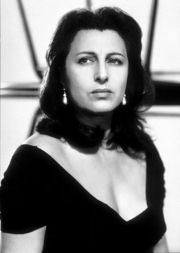 |
|
| Born | 7 March 1908 Rome, Italy |
| Died | 26 September 1973 (aged 65) Rome, Italy |
| Occupation | Actress |
| Years active | 1928–1972 |
| Spouse | Goffredo Alessandrini (1935–1950) |
Anna Magnani (pronounced: mahn-YANNI; 7 March 1908 – 26 September 1973) was an Italian stage and film actress.[1] She won the Academy Award for Best Actress, along with four other international awards, for her portrayal of a Sicilian widow in The Rose Tattoo. Born in Rome to an Egyptian father and an Italian-Jewish mother,[2] she worked her way through Rome's Academy of Dramatic Art by singing at night clubs. During her career, her only child was stricken by Polio when he was 18 months old and remained crippled.
She was referred to as "La Lupa," the "perennial toast of Rome" and a "living she-wolf symbol" of the cinema. Time magazine described her personality as "fiery," and drama critic Harold Clurman said her acting was "volcanic." In the realm of Italian cinema, she was "passionate, fearless, and exciting," an actress that film historian Barry Monush calls "the volcanic earth mother of all Italian cinema."[3] Director Roberto Rossellini called her "the greatest acting genius since Eleonora Duse.[2] Playwright Tennessee Williams became an admirer of her acting and wrote The Rose Tattoo specifically for her to star in, a role for which she received her first Oscar in 1955.
After meeting director Goffredo Alessandrini she received her first screen role in La Cieca di Sorrento (The Blind Woman of Sorrento) (1934) and later achieved international fame in Rossellini's Rome, Open City (1945), considered the first significant movie to launch the Italian neorealism movement in cinema.[3] As an actress she became recognized for her dynamic and forceful portrayals of "earthy lower-class women"[4] in such films as The Miracle (1948), Bellissima (1951), The Rose Tattoo (1955), The Fugitive Kind (1960), with Marlon Brando and directed by Sidney Lumet, and Mamma Roma (1962). As early as 1950, Life magazine had already stated that Magnani was "one of the most impressive actresses since Garbo."[5]
Contents |
Early years
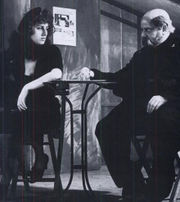
Magnani was born in Rome, Italy[7] to a Calabrese father, Francesco Del Duce, and a Roman mother, Marina Magnani. She was raised by her maternal (where the name Magnani comes from) grandmother in a slum district of Rome. Her formal education lasted only until age 14, when she enrolled in a French convent school in Rome. There, she learned to speak French and play piano, which she later played expertly. She also developed a passion for acting from watching the nuns stage their Christmas play.[5]
She was a "plain, frail child with a forlornness of spirit" which affected her grandparents who pampered her with food and clothes. While growing up she felt more at ease around "more earthly" companions, often befriending the "toughest kid on the block."[5] This trait carried over into her adult life where she proclaimed, "I hate respectability. Give me the life of the streets, of common people."[5]
At age 17, she went on to study at Eleanora Duse Royal Academy of Dramatic Art in Rome for two years.[5] To support herself, Magnani sang in nightclubs and cabarets leading to her being dubbed "the Italian Édith Piaf". However, her friend, actor Micky Knox, writes that she "never studied acting formally," and began her early career singing in Italian music halls singing Roman songs. "She was instinctive," he writes. "She had the ability to call up emotions at will, to move an audience, to convince them the life on the stage was as real and natural as life in their own kitchen."[8]
- Stage
She was considered an "outstanding theatre actress" in Anna Christie and The Petrified Forest, and had a big career in variety shows.[9]
- Early film roles
In 1933 she was acting in experimental plays in Rome when she was discovered by Italian filmmaker Goffredo Alessandrini.[5] He was one of the first Italian filmmakers to make use of sound. He then directed her in her first major film role in La Cieca di Sorrento (The Blind Maid of Sorrento) in 1934. They were also married in 1933, shortly before the movie was released.
In 1941, Magnani starred in Teresa Venerdì, (Friday Theresa) which the writer and director, Vittorio De Sica, called Magnani’s "first true film". In it she plays Loletta Prima, the girlfriend of Di Sica’s character, Pietro Vignali. De Sica had called her laugh, "loud, overwhelming, and tragic".
Acting style
According to film historian Robin Wood Magnani's "persona as a great actress is built, not on transformation, but on emotional authenticity . . . .", adding that she "doesn't portray characters but expresses 'genuine' emotions."[7] Her style is notable by not displaying the more obvious attributes of the female star, with neither her face or physical makeup being considered "beautiful." However, she possesses a "remarkably expressive face," and for American audiences, at least, she represents "what Hollywood had consistently failed to produce: 'reality'." She was the atypical star, the "nonglamorous human being," as her genuine style of acting became a "rejection of glamour."[7]
Her most distinguished work in Hollywood is in Wild is the Wind, according to Wood. Directed by George Cukor, "the American cinema's greatest director of actresses," he was able to draw out the "individual essence" of Magnani's "sensitive and inward performance."[7] Her other well-known films, such as The Rose Tattoo and The Fugitive Kind, were, despite being award-winning films, beneath her abilities as an actress.[7]
Acting career
Rome, Open City (1945)
Her film career had spread over almost 20 years before she gained international renown as Pina in Roberto Rossellini's neorealist milestone Roma, città aperta (Rome, Open City, 1945). Her harrowing death scene remains one of cinema's most devastating moments. The film was about Italy's final days under German occupation during World War II where Magnani gave a "brilliant performance" as a woman who dies fighting to protect her husband, an underground fighter against the Nazis.[10]
In Italy (and gradually elsewhere) she soon became established as a star, although she lacked the conventional beauty and glamour often associated with the term. Slightly plump and rather short in stature with a face framed by unkempt raven hair and eyes encircled by deep, dark shadows, she smouldered with seething earthiness and volcanic temperament. Rossellini, whom she called "this forceful, secure courageous man", was her lover at the time, and she collaborated with him on other films.
The Miracle (1948)
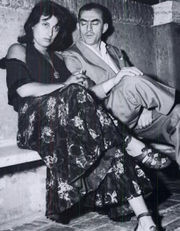
Other collaborations with Rossellini include L'Amore, a two part film from 1948 which includes "The Miracle" and "The Human Voice" ("Il miracolo", and "Una voce umana"). In the former, Magnani, playing a peasant outcast who believes the baby she's carrying is Christ, plumbs both the sorrow and the righteousness of being alone in the world. The latter film, based on Jean Cocteau's play about a woman desperately trying to salvage a relationship over the telephone, is remarkable for the ways in which Magnani's powerful moments of silence segue into cries of despair. One could surmise that the role of this unseen lover was Rossellini, and was based on conversations that took place throughout their own real-life affair.
The Golden Coach (1953)
In Luchino Visconti's Bellissima (1951) she plays Maddalena, a blustery, obstinate stage mother who drags her daughter to Cinecittà for the 'Prettiest Girl in Rome' contest, with dreams that her plain daughter will be a star. Her emotions in the film went from those of rage and humiliation to maternal love.[11] The film was made during the "grim period" of Italy's post World War II recovery.
She later starred as Camille (stage name: Columbine), a woman torn between three men, a soldier, a bullfighter, and a viceroy, in Jean Renoir’s film Le Carrosse d'or (also known as The Golden Coach, 1953). Renoir called her "the greatest actress I have ever worked with".
The Rose Tattoo (1955)
She played the widowed mother of a teenage daughter in Daniel Mann's 1955 film, The Rose Tattoo, based on the play by Tennessee Williams. It co-starred Burt Lancaster, and was Magnani's first English speaking role in a mainstream Hollywood movie, winning her the Academy Award for Best Actress. Lancaster, who played the role of a "lusty truck driver," said that "if she had not found acting as an outlet for her enormous vitality, she would have become 'a great criminal.'"[11]
Film historian John DiLeo writes that her acting in the film "displays why she is inarguably one of the half dozen greatest screen actresses of all time," and added:
- "Whenever Magnani laughs or cries (which is often), it's as if you've never seen anyone laugh or cry before: has laughter ever been so burstingly joyful or tears so shatteringly sad?[12]:275
Tennessee Williams wrote the screenplay and based the character of Serafina on Magnani, as Williams was a great admirer of her acting abilities,[3] and he even stipulated that the movie "must star what Time described as 'the most explosive emotional actress of her generation, Anna Magnani."[11] In his Memoirs, Williams described why he insisted on Magnani playing this role:
- "Anna Magnani was magnificent as Serafina in the movie version of Tattoo. . . . She was as unconventional a woman as I have known in or out of my professional world, and if you understand me at all, you must know that in this statement I am making my personal estimate of her honesty, which I feel was complete.
- "She never exhibited any lack of self-assurance, any timidity in her relations with that society outside of whose conventions she quite publicly existed. . . . she looked absolutely straight into the eyes of whomever she confronted and during that golden time in which we were dear friends, I never heard a false word from her mouth."[13]
It was originally put on stage starring Maureen Stapleton, because Magnani’s English was too limited at the time for her to star. Magnani won other Best Actress awards for her role, including the BAFTA Film Award, Golden Globes Award, National Board of Review, USA, and the New York Film Critics Circle Awards.[14]
The Fugitive Kind (1959)
Magnani worked with Tennessee Williams again in his 1959 film, The Fugitive Kind (originally titled, Orpheus Descending) directed by Sidney Lumet, where she played Lady Torrance and starred with Marlon Brando. The original screenplay, Orpheus Descending, was another play inspired by Magnani, although she similarly didn't act in the Broadway play. In the film, she played a woman "hardened by life's cruelties and a grief that will not fade."[12] It also co-starred a young Joanne Woodward in one of her early roles. In an article he wrote for Life magazine, Williams discussed why he chose her for the part:
- "Anna and I had both cherised the dream that her appearance in the part I created for her in The Fugitive Kind would be her greatest triumph to date, . . . She is simply a rare being who seems to have about her a little lightning-shot cloud all her own . . . . In a crowded room, she can sit perfectly motionless and silent, and still you feel the atmospheric tension of her presence, its quiver and hum in the air like a live wire exposed, and a mood of Anna's is like the presence of royalty."[15]
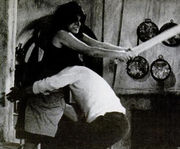
In The Wild, Wild Women (1958) paired Magnani, as an unrepentant streetwalker, with Giulietta Masina in a women-in-prison film. In Pier Paolo Pasolini's Mamma Roma (1962), Magnani is both the mother and the whore, playing an irrepressible prostitute determined to give her teenage son a respectable middle-class life. Mamma Roma, while one of Magnani's critically acclaimed films, was not released in the United States until 1995, deemed too controversial thirty years earlier. By now she was frustrated at being typecast in parts as poor women. Magnani in 1963 commented, "I’m bored stiff with these everlasting parts as a hysterical, loud, working-class women".[16]
The Secret of Santa Vittoria (1969)
In one of her last film roles, The Secret of Santa Vittoria (1969), she co-starred with Anthony Quinn, and they played husband and wife in what Life magazine called "perhaps the most memorable fight since Jimmy Cagney smashed Mae Clarke in the face with a half a grapefruit." Magnani and Quinn did feud in private outside view of the cameras, however, and their animosity spilled over into their scenes:
- "By the time the movie makers were ready to shoot the fight scene, the stars were ready too. Magnani not only went for Quinn with the pasta and with a rolling pin, but with her foot; she kicked so hard she broke a bone in her right foot. She also bit him in the neck. 'That's not in the script,' Quinn protested. Magnani snarled, 'I'm supposed to win this fight, remember?"[17]
She later acted (uncredited) as herself (within a dramatic context) in Fellini's Roma (1972). Towards the end of her career, Magnani was quoted as having said, "The day has gone when I deluded myself that making movies was art. Movies today are made up of…intellectuals who always make out that they’re teaching something"
Personal life

She married her first film director, Goffredo Alessandrini, in 1935, two years after he discovered her on stage. After they married, she retired from full-time acting to "devote herself exclusively to her husband", although she continued to play smaller film parts.[5] They separated in 1942.
Magnani's life was struck by tragedy when her only child, a son born after her separation, came down with crippling polio at only 18 months of age. He never regained use of his legs. As a result, she spent most of her early earnings for specialists and hospitals. After once seeing a legless veteran drag himself along the sidewalk, she said, "I realize now that it's worse when they grow up," and resolved to earn enough to "shield him forever from want".[5]
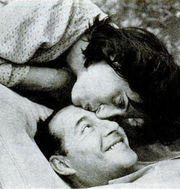
In 1945 she fell in love with director Roberto Rossellini while working on Roma, Cittá Aperta (AKA Rome, Open City (1945). "I thought at last I had found the ideal man," she said. "He had lost a son of his own and I felt we understood each other. Above all, we had the same artistic conceptions." However, Rossellini had become violent, volatile and possessive, and they argued constantly about films or out of jealousy. "In fits of rage they threw crockery at each other."[5] Nonetheless, as artists they complemented each other well when working in neorealist films. Eventually, he promised to direct her in a film he was preparing which he told her would be "the crowning vehicle of her career." However, when the screenplay was completed, he instead gave the role for Stromboli to a Swedish star of U.S. films, Ingrid Bergman, which caused Magnani's permanent breakup with Rossellini.[5]
As a result, Magnani took on the starring role of Volcano, which was said to have been deliberately produced to invite comparison:[5]:125 both films were shot in similar locales of Aeolian Islands only 12 miles apart; both actresses played independent-minded roles in a neorealist fashion; and both films were shot simultaneously. Life magazine wrote, ". . . in an atmosphere crackling with rivalry . . . Reporters were accredited, like war correspondents, to one or the other of the embattled camps. . . . Partisanship infected the Via Veneto (boulevard in Rome), where Magnaniacs and Bergmaniacs clashed frequently." However, Magnani still considered Rossellini the "greatest director she ever acted for".[5]
Magnani was superstitious and consulted astrologers, as well as believing in numerology. She also claimed to be clairvoyant. She ate and drank very little and could subsist for long periods on nothing more than black coffee and cigarettes. However, these habits often affected her sleep: "My nights are appalling," she said. "I wake up in a state of nerves and it takes me hours to get back in touch with reality."[5]
Death
She died at the age of 65 in Rome, after a long battle with pancreatic cancer. A huge crowd gathered for her funeral in a final salute that Romans usually reserve for Popes. She was provisionally laid to rest in the family mausoleum of Roberto Rossellini, her favorite director and longtime friend. She now rests in the Cimitero Comunale, San Felice Circeo, Lazio, Italy.
Filmography and awards

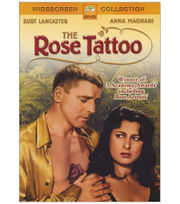
| Year | Film | Role | Notes |
|---|---|---|---|
| 1928 | Scampolo | ||
| 1934 | La Cieca di Sorrento | Anna, la sua amante | |
| Tempo massimo | Emilia | ||
| 1935 | Quei due | ||
| 1936 | Cavalleria | Fanny | |
| Trenta secondi d'amore | |||
| 1938 | La Principessa Tarakanova | Marietta, la cameriera | |
| 1940 | Una Lampada alla finestra | Ivana, l'amante di Max | |
| 1941 | Teresa Venerdì | Maddalena Tentini/Loretta Prima | |
| La Fuggitiva | Wanda Reni | ||
| 1942 | La Fortuna viene dal cielo | Zizì | |
| Finalmente soli | Ninetta alias "Lulù" | ||
| 1943 | L'Ultima carrozzella | Mary Dunchetti, la canzonettista | |
| Gli Assi della risata | segment "Il mio pallone" | ||
| Campo de' fiori | Elide | ||
| La Vita è bella | Virginia | ||
| L'Avventura di Annabella | La mondana | ||
| 1944 | Il Fiore sotto gli occhi | Maria Comasco, l'attrice | |
| 1945 | Abbasso la miseria! | Nannina Straselli | |
| Roma, città aperta | Pina | National Board of Review Award Italian National Nastro d'Argento Best Actress |
|
| Quartetto pazzo | Elena | ||
| 1946 | Abbasso la ricchezza! | Gioconda Perfetti | |
| Il bandito | Lidia | ||
| Avanti a lui tremava tutta Roma | Ada | ||
| Lo Sconosciuto di San Marino | Liana, la prostituta | ||
| Un Uomo ritorna | Adele | ||
| 1947 | L'onorevole Angelina | Angelina Bianchi | Nastro d'Argento Best Actress Venice Film Festival - Volpi Cup |
| 1948 | Assunta Spina | Assunta Spina | |
| L'Amore | The Woman*/Nanni** | * in segment "Una voce umana"/** in segment "Il miracolo" Nastro d'Argento Best Actress |
|
| Molti sogni per le strade | Linda | ||
| 1950 | Vulcano | Maddalena Natoli | |
| 1951 | Bellissima | Maddalena Cecconi | Nastro d'Argento Best Actress |
| 1952 | Camicie rosse | Anita Garibaldi | |
| 1953 | The Golden Coach | Camilla | |
| 1955 | The Rose Tattoo | Serafina Delle Rose | Academy Award for Best Actress BAFTA Award for Best Actress in a Leading Role Golden Globe Award for Best Actress - Motion Picture Drama National Board of Review Award for Best Actress New York Film Critics Circle Award Best Actress |
| Carosello del varietà | |||
| 1957 | Wild Is the Wind | Gioia | Berlin Film Festival - Silver Bear for Best Actress[18] David di Donatello for Best Actress Nominated - Academy Award for Best Actress Nominated - BAFTA Award for Best Actress in a Leading Role Nominated - Golden Globe Award for Best Actress - Motion Picture Drama |
| Suor Letizia | Sister Letizia | Nastro d'Argento Best Actress Nominated - David di Donatello for Best Actress |
|
| Nella città l'inferno | Egle | David di Donatello for Best Actress Grolla d'Oro Best Actress Sant Jordi Awards Best Performance in a Foreign Film |
|
| 1958 | Risate di gioia | Gioia Fabbricott | |
| 1959 | The Fugitive Kind | Lady Torrance | |
| 1962 | Mamma Roma | Mamma Roma | |
| 1969 | The Secret of Santa Vittoria | Rosa | Nominated -Golden Globe Award for Best Actress – Motion Picture Musical or Comedy |
| 1971 | 1870 | Tersa Parenti | Globo d'oro Best Actress |
References
- ↑ Obituary Variety, October 3, 1973, page 47.
- ↑ 2.0 2.1 Johnson, Bruce. Miracles and Sacrilege: Roberto Rossellini, the Church, and Film Censorship, Univ. of Toronto Press (2008) p. 194
- ↑ 3.0 3.1 3.2 Monush, Barry. The Encyclopedia of Hollywood Film Actors, Hal Leonard Corp. (2003)
- ↑ Merriam-Webster's Collegiate Encyclopedia, Merriam-Webster, (2000)
- ↑ 5.00 5.01 5.02 5.03 5.04 5.05 5.06 5.07 5.08 5.09 5.10 5.11 5.12 Kobler, John."Tempest on the Tiber" Life, Feb. 13, 1950
- ↑ Hochkofler, Matilde. Anna Magnani, Gremese Editore (2001)
- ↑ 7.0 7.1 7.2 7.3 7.4 International Dictionary of Films and Filmmakers - 3: Actors and Actresses, St. James Press (1997)
- ↑ Knox, Mickey. The Good, the Bad, and the Dolce Vita, Nation Books (2004) p. 126
- ↑ Thomson, David. The New Biographical Dictionary of Film, Alfred A. Knopf (2002)
- ↑ Mancel, Frank. Film Study: An Analytical Bibliography, Vol. I, Fairleigh Dickinson Univ. (1990) p. 378
- ↑ 11.0 11.1 11.2 Buford, Kate. Burt Lancaster: An American Life, Da Capo Press (2000) p. 142
- ↑ 12.0 12.1 DiLeo, John. One Hundred Great Film Performances You Should Remember, but Probably Don't, Hal Leonard Corp. (2002)
- ↑ Williams, Tennessee. Memoirs, New Directions Publ./Univ. of the South (1972) p. 162
- ↑ IMDB International Movie Database
- ↑ Williams, Tennessee. Life Magazine, Feb. 3, 1961
- ↑ "Biography of Anna Magnani" Italiamai.com
- ↑ Hamblin, Dora Jane. Life magazine, Dec. 6, 1968
- ↑ "Berlinale 1958: Prize Winners". berlinale.de. http://www.berlinale.de/en/archiv/jahresarchive/1958/03_preistraeger_1958/03_Preistraeger_1958.html. Retrieved 2010-01-05.
Video clips
- various movie clips
- scene from Rome, Open City
- scene from The Fugitive Kind with Marlon Brando
- "A Tribute slide show"
- trailer for Wild is the Wind (1957)
- scene from Wild is the Wind with Anthony Quinn
- scene from Correva l'anno di grazia' with Marcello Mastroianni
External links
|
||||||||||||||||||||||||||||||||